Key takeaways
- Inclusive spaces foster a sense of belonging by valuing diverse identities and actively inviting participation from all members.
- The principles of inclusion include intentional respect, accessibility, and ongoing self-reflection to identify and overcome biases.
- Creating opportunities for open dialogue and diversifying leadership can significantly enhance the inclusivity of environments.
- Sustaining inclusivity requires regular feedback, adaptability, and continuous efforts to address the evolving needs of the community.
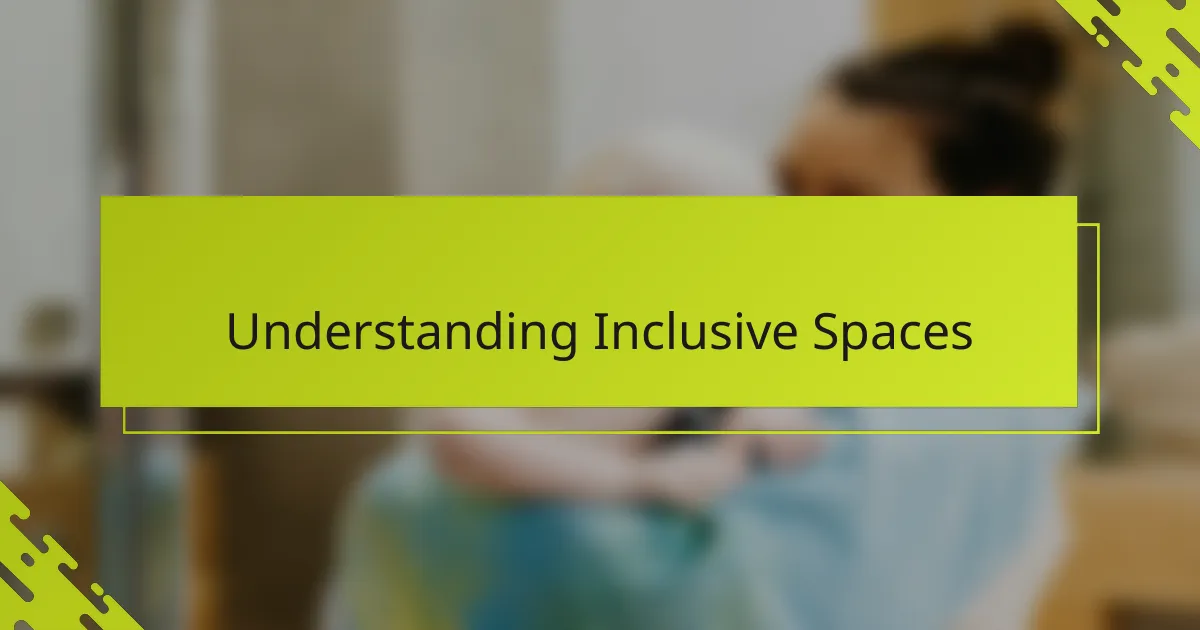
Understanding Inclusive Spaces
Inclusive spaces, to me, are more than just physical locations—they’re places where every person feels genuinely seen and valued. I remember walking into a room where all conversations felt welcoming, and I instantly felt a sense of belonging. Have you ever experienced that powerful moment of realizing you don’t have to hide parts of yourself to be accepted?
Creating such spaces means recognizing and honoring the diverse identities and experiences within our community. It’s about actively listening and questioning whether the environment invites participation from everyone, or if some voices are unintentionally pushed to the margins. What assumptions might we be making that limit this inclusivity?
Understanding inclusive spaces also requires empathy—placing ourselves in someone else’s shoes to grasp their needs and challenges. For me, this practice has deepened my commitment to equity and respect within queer women culture. How often do we pause to truly consider how a space might feel from another perspective?
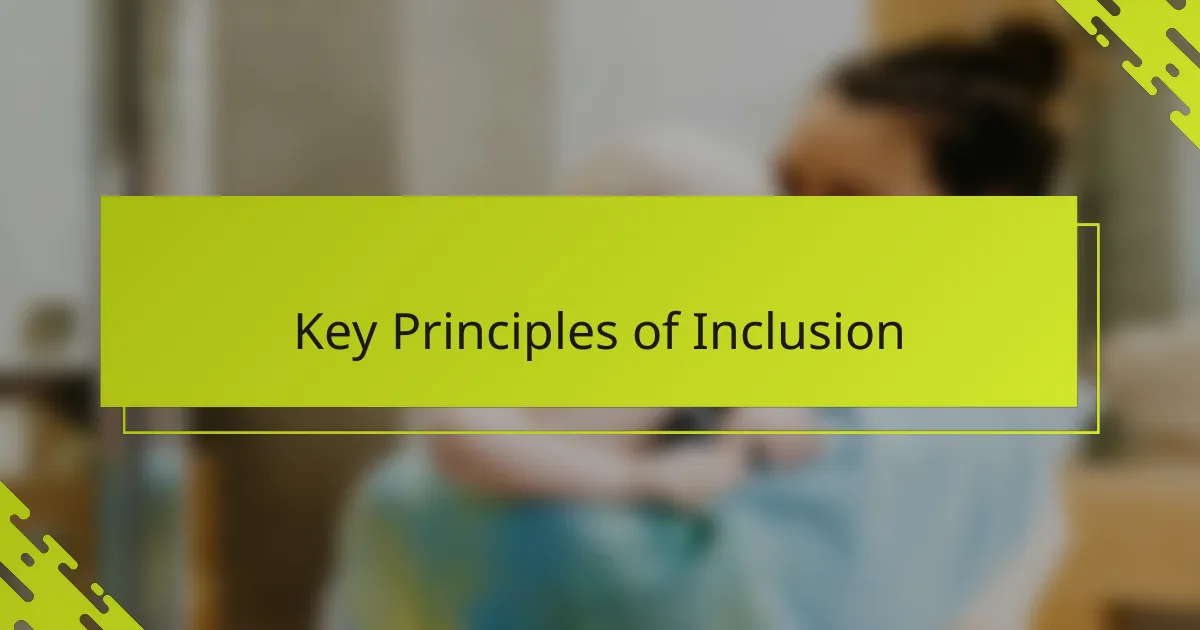
Key Principles of Inclusion
Inclusion, as I see it, starts with intentional respect—actively choosing to honor each person’s identity without making assumptions. I once attended a gathering where organizers simply asked, “How can we make this space better for you?” That openness made all the difference. When was the last time you felt truly asked about your needs?
Another key principle is accessibility, not just physically but emotionally and socially. It means creating environments where everyone can participate comfortably, whether that’s through language, policies, or cultural cues. Have you noticed how small changes—like using inclusive language—can shift the entire energy of a room?
Lastly, inclusion requires ongoing self-reflection and willingness to learn from mistakes. I’ve found that sometimes the biggest barriers come from unconscious biases I didn’t even realize I held. How willing are we to be uncomfortable—and grow—when faced with perspectives that challenge our own?
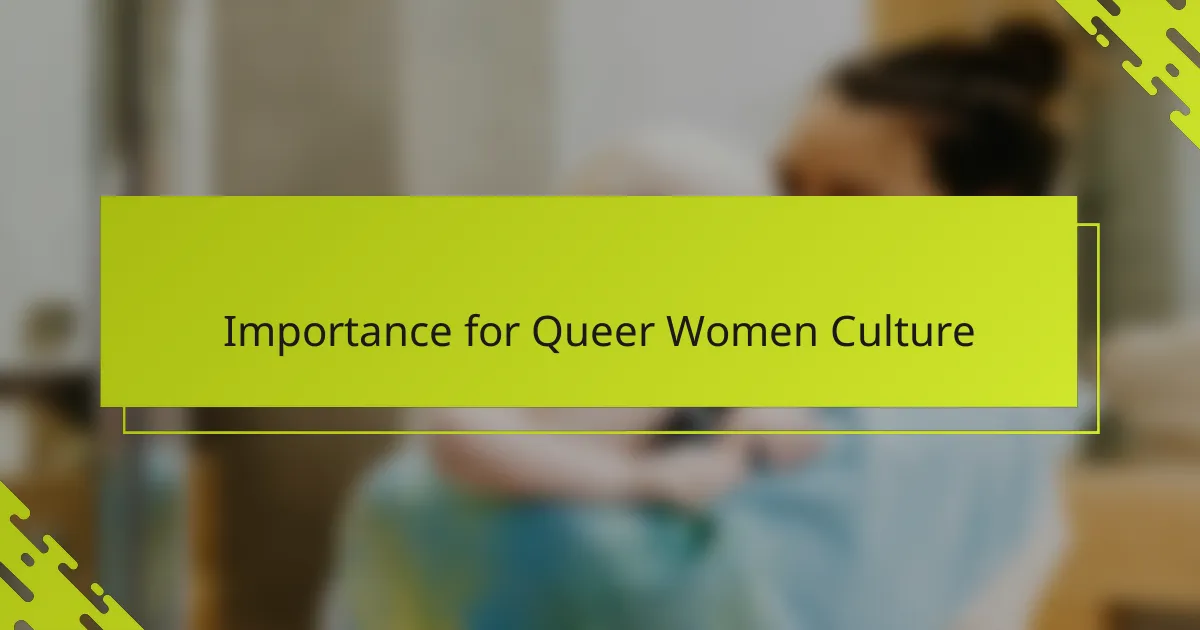
Importance for Queer Women Culture
When I think about queer women culture, inclusive spaces feel absolutely essential—they nurture a sense of safety where we can express ourselves without fear or judgment. I recall times at community events where the atmosphere welcomed every story, every identity, and it transformed my experience from feeling isolated to deeply connected. Have you noticed how being truly acknowledged can uplift your spirit in ways few things can?
Inclusive spaces also shape the way queer women build solidarity and resilience together. When we gather in places that honor our differences, it becomes easier to share struggles and celebrate victories. From my experience, this kind of environment sparks authentic friendships and a collective strength that feels impossible to achieve otherwise.
But why does this matter so much? Because queer women culture thrives on visibility and voice, and exclusion, even unintentionally, can silence vital parts of our community. How often do we pause to consider whose stories are heard and whose are missing? For me, creating inclusive spaces is a hopeful promise that every queer woman has a place to belong and be seen.
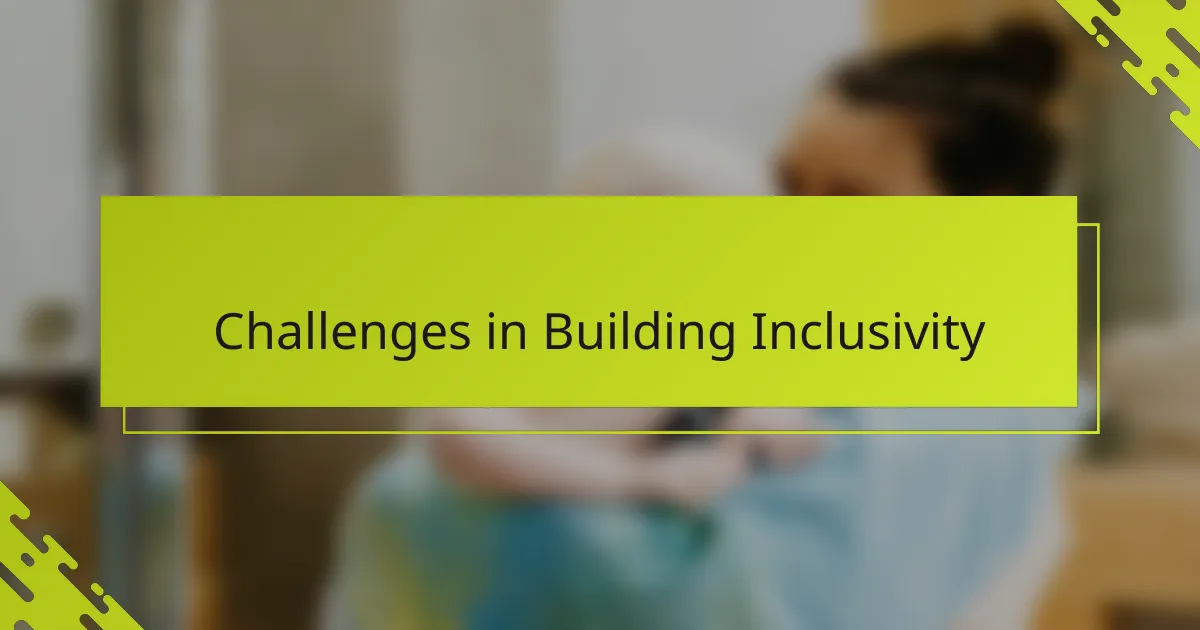
Challenges in Building Inclusivity
Building truly inclusive spaces is often harder than it looks. I’ve seen well-intentioned events unintentionally exclude people because of overlooked needs—like inaccessible venues or spaces that unintentionally center certain voices over others. Have you ever felt the sting of being present but invisible because something wasn’t considered?
Another challenge is confronting deep-rooted biases within ourselves and communities. I remember grappling with my own assumptions and realizing they shaped how I welcomed others. It’s uncomfortable work, but necessary. How willing are we to face these internal barriers honestly?
Plus, inclusivity isn’t a one-time fix; it demands constant attention and adjustment. What felt inclusive last year might exclude someone today. From my experience, staying open, curious, and ready to change is the toughest part—but also the most vital for building spaces where everyone can truly belong.
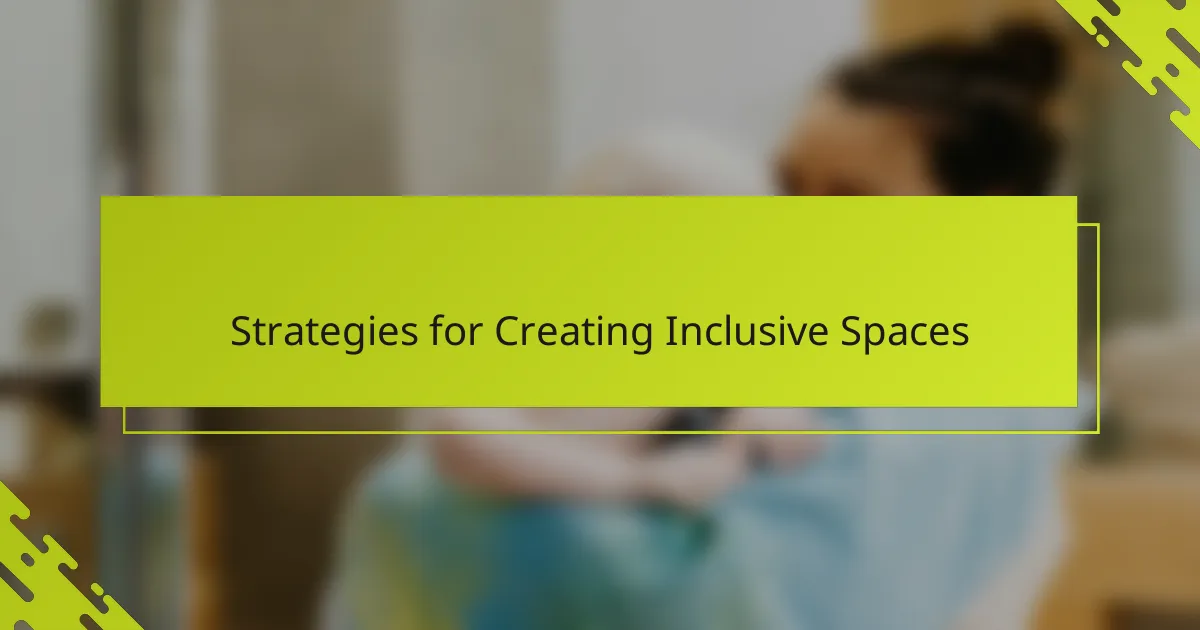
Strategies for Creating Inclusive Spaces
One strategy I’ve found essential is creating opportunities for open dialogue—spaces where people feel safe to share their experiences and needs without fear of judgment. I recall hosting a circle where simply asking, “What do you need from this space?” sparked honest conversations that transformed how we structured future gatherings. Have you ever noticed how powerful it is when your voice actually shapes the environment you’re in?
Another approach is intentionally diversifying leadership and decision-making roles. When I saw a community collective shift to include queer women from a range of backgrounds, the vibe instantly became richer and more welcoming. It’s a reminder that inclusion isn’t just about who shows up—it’s about who holds influence and shapes outcomes.
Finally, consistent education and reflection keep the momentum going. I make it a point to revisit feedback and question my own biases regularly. This ongoing commitment keeps spaces from becoming stagnant, ensuring they evolve alongside the community’s needs. How often do you pause to check if your space still feels inclusive to those who might be quieter or less visible?
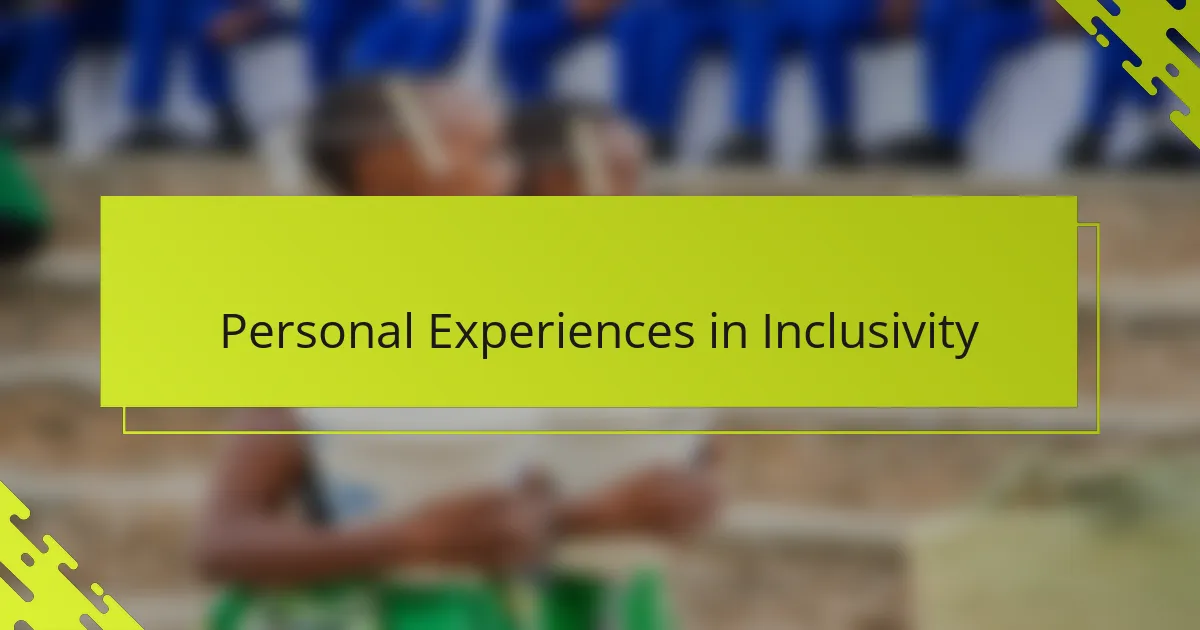
Personal Experiences in Inclusivity
There was a moment at a queer women’s meetup where I overheard someone quietly sharing that they hadn’t felt welcomed at similar events before. Listening to that made me realize how much impact small gestures—like acknowledging names and pronouns—can have in making someone feel truly included. Have you ever had someone notice a small detail about you that made all the difference?
In another experience, I struggled with feeling like an outsider despite being part of the community. It wasn’t until a friend gently invited me to share my story that I felt visible and valued. That taught me that inclusivity isn’t just about open doors but also about actively inviting voices that might otherwise stay silent. How often do we extend that invitation ourselves?
Sometimes, I’ve found that even spaces meant to be welcoming slip into patterns of exclusion without realizing it. For example, events scheduled without considering caregiving responsibilities can unintentionally exclude many queer women. These moments have pushed me to think critically about what it really takes to build spaces where everyone can show up fully—what about you?
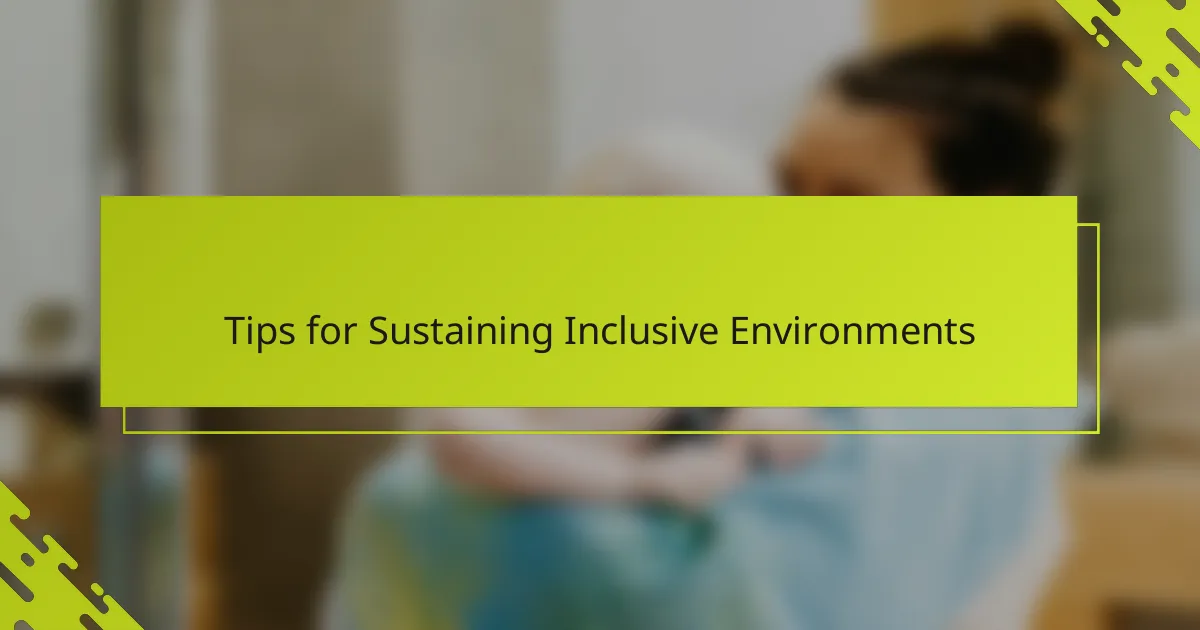
Tips for Sustaining Inclusive Environments
Sustaining inclusive environments, to me, means never settling into comfort zones. I’ve noticed that even well-meaning spaces can slowly drift away from inclusivity if we don’t consciously keep checking in. How often do we ask ourselves, “Who might be feeling left out right now?” This ongoing curiosity is crucial—it’s like tending a garden; without regular care, weeds of exclusion sneak in unnoticed.
One practice I find invaluable is creating feedback loops where people feel safe to express concerns or suggestions. I remember once organizing a wrap-up session after a community event and being surprised by how many insightful ideas surfaced just because folks felt heard. Have you tried intentionally carving out time for reflection in your spaces? Those moments can be transformative.
Finally, I think sustaining inclusivity means embracing flexibility—recognizing that people’s needs evolve. From my experience, what felt inclusive last season might need tweaking today, whether it’s adjusting event times, language, or even the way we signal welcome. How open are we to pivoting when the community’s rhythm changes? Staying adaptable keeps the space alive and truly inviting for everyone.
